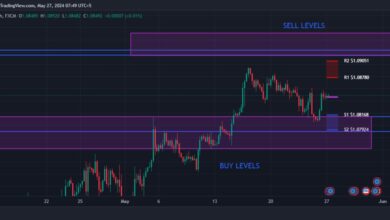Gold Analysis: Anticipating a Retest of 2340–2343 Points, Followed by Upside Potential to 2353

As the markets continue to navigate through various economic uncertainties, gold remains a focal point for investors seeking stability and security. In the ever-fluctuating landscape of commodities, technical analysis often provides valuable insights into potential price movements. Here’s a closer look at what the charts are suggesting for gold’s trajectory in the near term.
Retest of 2340–2343 Points:
Gold has been exhibiting a pattern of consolidation in recent sessions, hovering around key support levels. Technical indicators suggest that the precious metal might undergo a retest of the 2340–2343 point range. This level has served as a significant support zone in previous trading sessions, and a retest could validate its strength once again.
Market sentiment, influenced by factors such as inflation concerns, geopolitical tensions, and central bank policies, continues to underpin gold’s appeal as a safe-haven asset. However, short-term fluctuations driven by economic data releases and shifts in investor sentiment cannot be overlooked.
Upside Potential to 2353:
Should gold successfully retest and hold above the 2340–2343 point range, it could pave the way for a bullish move towards the 2353 mark. This level represents a key resistance area, where gold’s price action may encounter some initial selling pressure.
Nevertheless, a breach above 2353 could signal renewed bullish momentum, potentially opening the door for further upside gains. Factors such as weakening US dollar, geopolitical instability, and inflationary pressures could fuel investor demand for gold, driving prices higher.
Considerations for Traders:
For traders monitoring gold’s price movements, it’s essential to remain vigilant and adapt to evolving market dynamics. Utilizing technical indicators, such as moving averages, trendlines, and momentum oscillators, can provide valuable insights into potential entry and exit points.
Risk management is paramount in trading, especially in volatile markets like commodities. Setting stop-loss orders and adhering to predefined risk-reward ratios can help mitigate downside risks and protect capital.
Additionally, staying informed about macroeconomic developments and geopolitical events can provide valuable context for gold’s price action. Market participants should keep a close eye on factors such as central bank policies, inflation data, and global trade tensions, as they can influence gold’s performance.
In conclusion, while gold’s short-term outlook may involve a retest of the 2340–2343 point range, followed by a potential upside towards 2353, traders should remain adaptable and informed to navigate the inherent uncertainties of the market. By combining technical analysis with a thorough understanding of fundamental drivers, traders can make more informed trading decisions in the dynamic landscape of commodities trading.





